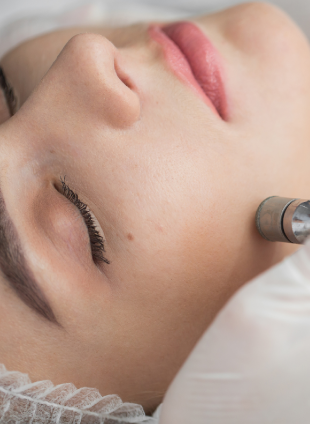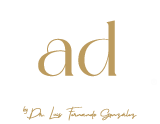Many people are concerned about their skin spots, especially if they appear suddenly or for no apparent reason. Sometimes, the Skin Spots change in size, color, texture and in some specific cases they can generate scales and suppurations. The important thing in all these cases is to stay calm and watch the injury carefully.
In this blog post we are going to talk about Skin Spots, their causes, types and treatments. You will notice that most Skin Spots do not cause major inconvenience, however, some types of Skin Spots are signs of diseases that must be treated quickly.
What are Skin Spots? What are its Causes?
Skin Spots are variations of the pigmentation of this organ, which are generally associated to an increase or decrease in melanin, a pigment derived from the amino acid tyrosine that gives the skin its coloration and protects it from UV rays.
The causes of Skin Spots are diverse and are basically divided into internal and external factors:
Internal causes of skin spots: genes (inheritance), advanced age, pre-existing diseases (diabetes, immune system disorders and cancer), hormonal changes (often associated with pregnancy), among others.
External causes of skin spots: continuous exposure to the sun, consumption of some foods, medicines and substances, fungal infections, among others.
The skin spots have different shades from the rest of the skin and are basically of two types:
Dark Skin Spots, which are caused by excess melanin (hyperpigmentation) in the affected area. These dark spots vary from reddish, going through light brown to black. They are more visible in people with light complexions and in some cases, they can present rough texture and relief.
White spots on the skin, that unlike the previous ones, these are the result of a decrease or total absence of melanin (hypopigmentation) of the affected area. The depigmentation of the skin is more evident in people with dark or brown complexion and in certain types they can generate flaking.
Most Common Skin Spot Types
Types of dark spots on the skin:
Freckles: are very frequent Skin Spots that do not pose any health risk. Freckles (or ephelides) are small round or irregular dots that are brown, brown, or reddish in color and usually appear on the face, back, chest, and arms, but can also appear anywhere on the body. Freckles can be present from birth (often associated with hereditary factors) but in other people they appear during childhood, adolescence, even adulthood. White-skinned people (especially redheads) are more likely to have freckles. The only problem with freckles for some people is aesthetic and they decide to remove them through medical procedures or mitigate them with cosmetic products.
Moles: unlike freckles, moles (nevi) are accumulations of melanocytes in the form of small round or oval dots, usually dark brown and black, and may have a small relief . Some people have moles from birth, while others appear in the course of life and do not represent any health problem, however, if any mole suffers noticeable variations in its size, shape of the edges, color and texture In a relatively short period of time, a medical specialist in clinical dermatology should be consulted to rule out or confirm any possible derivation in a malignant tumor such as melanoma in time.
Lentigo Simplex: is a type of Irregularly shaped and brown skin Spots that appear in elderly people. Simple lentigo spots can be from a few millimeters to two centimeters in diameter and usually appear on the face, neck, hands, arms, chest and back. Like freckles, simple lentigo does not represent any health problem and its only drawback in some people would be aesthetic.
Solar Lentigo: are skin spots very similar to simple lentigo, with the difference that they appear due to long periods of exposure to the sun's UV rays. Remember that one of the functions of melanin is to protect the skin from sunlight, so solar lentigo is nothing more than a reaction of the skin to continuous exposure to the sun. Solar lentigo is also not a health problem in itself, but they serve to warn people who are exposed to harmful UV rays for a long time, which, in turn, can cause other diseases, such as melanomas (cancer).
Melasma: are spots on the skin popularly known as "cloth", they have irregular shapes of brown tones and often appear on the face. They are often confused with simple lentigo, but the difference is that they are associated with estrogen variations, so the "cloth" is much more frequent in women, particularly pregnant. Apparently, the melasma is also related to thyroid problems and possible hereditary factors. Melasma does not represent any health hazard either, but only its aesthetic effect.
Spots Associated with Diabetes and Obesity: insulin resistance and obesity can cause various types of Spots of the Skin, the most common being acanthosis nigricans and diabetic dermopathy. Acanthosis nigricans consists of thick, rough, darkened areas in the folds of the neck and joints, but they can also be dark, velvety patches on the hands, limbs, and back.
Acanthosis nigricans appears as a consequence of diabetes or being overweight. The diabetic skin disease consists of dark spots of irregular shapes that appear with higher frequency in the legs and are a consequence of diabetes mellitus. The presence of diabetic dermopathy is an alert signal to the progress of diabetes mellitus (neurological damage, kidney failure, coronary complications and risk of blindness), so the patient should receive immediate medical attention.
Skin Spots from Acne: These spots appear as a natural result of any skin lesions, such as severe acne, since that in the affected areas the amount of melanin increases. These spots can be reddish in color (acne healing phase), even dark.
Types of white spots on the skin:
Pityriasis Alba: is a type of Skin Spots that starts with pink patches, including a slight rising edge of the skin, then turns into light spots with peeling and then they increase in size with fuzzy edges with the rest of the skin. Pityriasis alba is not contagious, is very common in children and is related to long periods of sun exposure, hot showers, prolonged exposure to water, use of abrasive soaps and moisture.
Mycosis: also known as "beach fungus", mycosis is a stain that appears as a consequence of an infection by various types of fungi that live under natural conditions on the skin but that come out of control before failures of the immune system. These fungi form plaques on the skin that prevent the passage of sunlight and therefore light-colored spots are appreciated.
Skin Spot Treatment
Since most Skin Spots are consequences of other minor conditions that do not represent serious health problems, the main treatments are corrective and aesthetic.
For example, laser is very effective for freckle removal, moles, lentigo and melasma.The laser is a controlled light emission, that is, it is a beam whose waves are manipulated according to the purpose you want with them. In the examples of skin spots already mentioned, the laser only acts on the pigments that are to be removed without affecting the rest of the skin. Many melasma patients, as a consequence of pregnancy, observe a reduction of the spots when their gestation period ends, but in other cases the melasma remains even after pregnancy, so the application of laser is necessary for its removal.
Treatment for mycosis is usually topical in nature, mostly in the form of creams and pills, but an evaluation of the immune system is also recommended. Pityriasis alba can be treated with antifungal treatments, in addition to reducing exposure to the sun and unnecessary contact with water.
However, those Skin Spots that are signs of chronic diseases, such as acanthosis nigricans and diabetic dermopathy, must be treated comprehensively under strict medical supervision, since these will not disappear on their own until the factors are controlled. that cause it, such as diabetes mellitus and obesity. However, the laser is used to reduce the thickness of acanthosis nigricans spots and improve their appearance.
And as we already explained, only a very small percentage of freckles can lead to melanomas. The treatment of melanoma skin cancer should be carried out by a specialist doctor (dermatologist or oncologist), who will evaluate the most appropriate treatment according to the type of injury and degree of progress: surgery, radiotherapy, etc.
As you can see, the Skin Spots are multifactorial and in most cases they do not represent any health problem, but sometimes they are manifestations of pre-existing diseases or that can lead to serious diseases. That is why I recommend that you do not apply home remedies, since they do not offer any improvement, they can even worsen the condition.
If you have spots on the skin, I invite you to come to my office, where I will provide you with the appropriate diagnosis on the type of spot you have, I will show you the different alternatives and offer you personalized advice to guarantee an excellent result.





